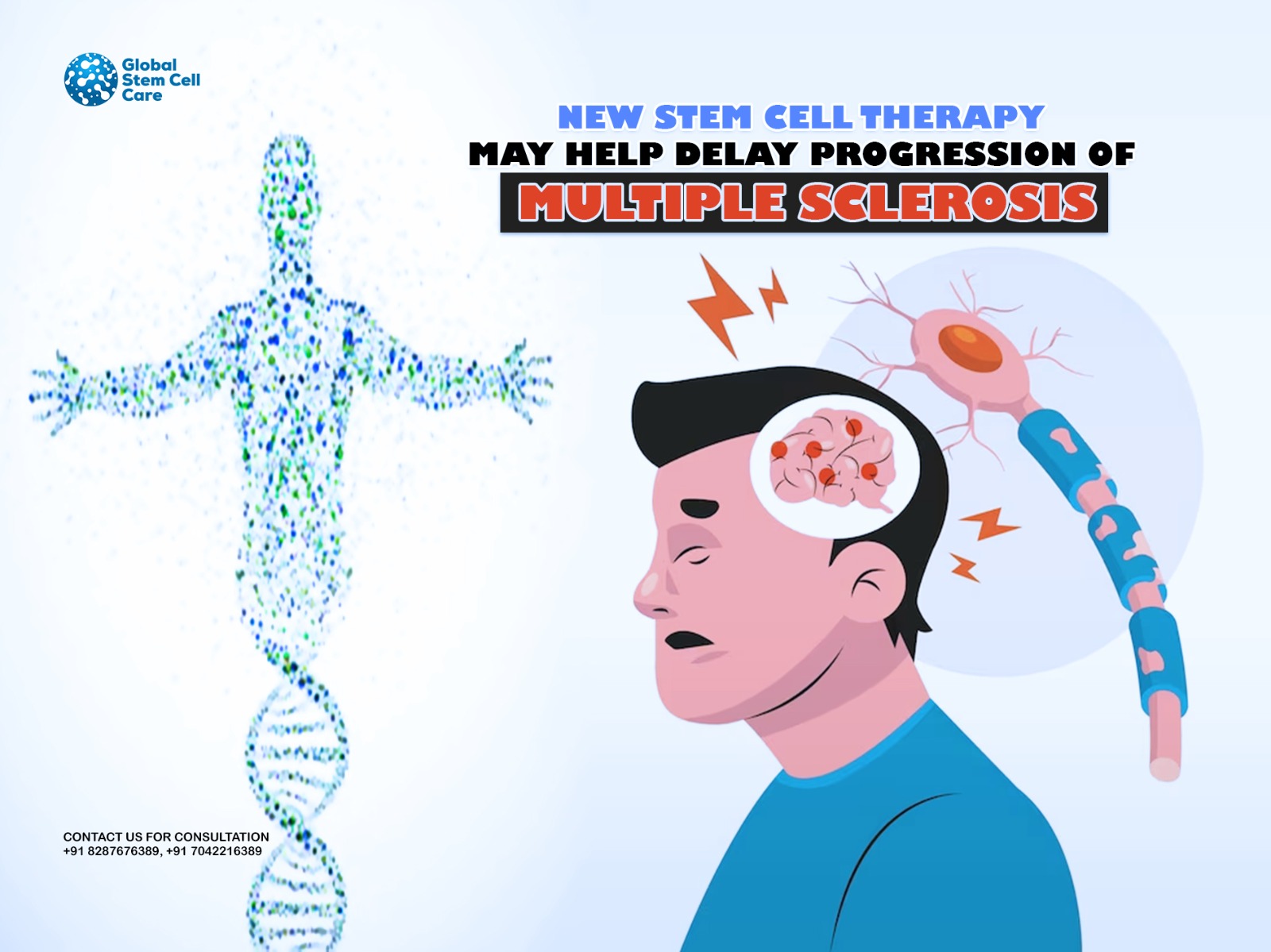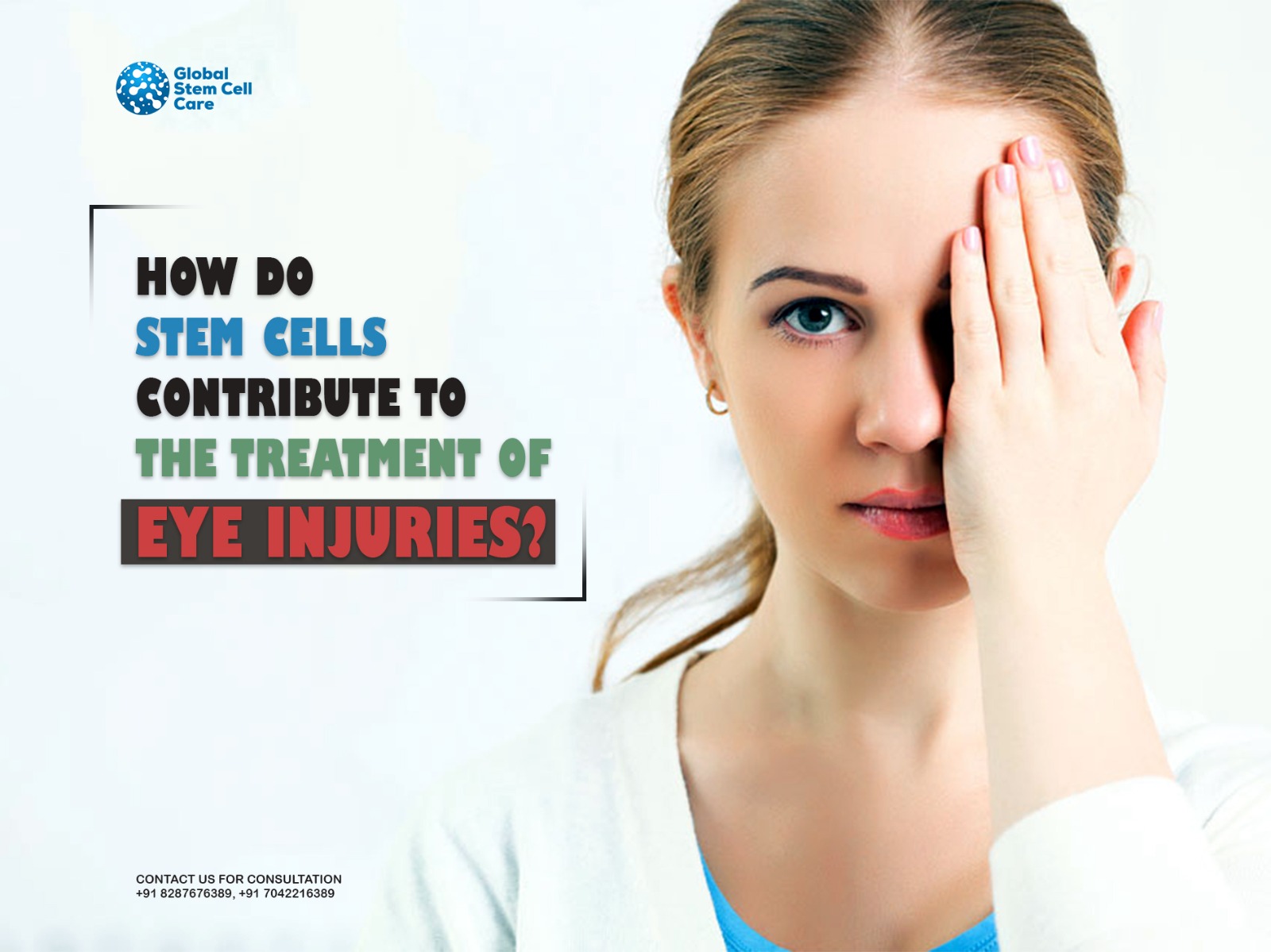
Get Stem Cell Therapy for Peripheral Blood in Delhi, India
A procedure in which a patient collects healthy blood-forming cells (stem cells) in order to replace their own stem cells that have been killed by radiation or illness or excessive levels of anticancer medications that are delivered as part of the procedure. The healthy stem cells may come from the patient’s or a donor’s blood. A donation of peripheral blood stem cells can be autologous (using the patient’s own stem cells harvested and processed before treatment), allogeneic (using stem cells donated by someone who is not an identical twin), or syngeneic (using stem cells donated by someone who is not an identical twin) (using stem cells donated by an identical twin). Global Stem Cell Care extends reliable stem cell treatment in India.
Peripheral Blood Stem Cell Treatment in India
Peripheral blood stem cell treatment in India at Global Stem Cell Care provides the help to restore the cells that are damaged and destroyed because of any circumstances. Our medical team will always be ready to assist you in ensuring that you get the best quality treatment. This treatment method is beneficial to treat several medical conditions with ease. Our patients start witnessing the reduction of symptoms and stoppage of disease progression. If you are looking for the best stem cell centre in India, then Global Stem Cell Care will be your best choice.
DO YOU KNOW ABOUT PERIPHERAL BLOOD TREATMENT?
A procedure requiring the first harvesting of particular cells or stem cells from the donor’s peripheral blood is peripheral blood stem cell transplantation.
These cells are collected and then retained by a form of filtration, usually by freezing, and eventually given to the recipient after he or she has been treated intensively
Instead of bone marrow cells, stem cells are normally produced. Once the intensive rehabilitation is done, they go to the bone marrow regions of the patient and restore the bone marrow.
The operation does not require surgery, but is nevertheless a form of transplantation.
Stem cell treatment in India is offered by the best and the most reliable hospitals.
YMPTOMS OF PERIPHERAL BLOOD TREATMENT
The blood is pumped into a computer and it skims out the stem cells. The cell detachment is called pheresis or apheresis (from the Greek “aphairesis” for removal). The stem cells will then are used for the transplant immediately or deposited suspended in DMSO and frozen until required in liquid nitrogen. The patient requires high-dose chemotherapy and/or radiation treatment for multiple days to kill diseased cells before the transplant is carried out (the leukemic cells, lymphoma cells, solid tumor cells, the diseased immune system cells in scleroderma, etc.)

DIAGNOSIS
If blood stem cells are extracted directly from your blood, you can undergo drug injections to enhance blood stem cell development such that more of them circulate in your bloodstream. The drug normally starts a few days before you donate it. Blood is normally taken out by a catheter in a vein in the arm for the donation. Via a system that extracts out the stem cells, the blood is sent. Your bloodstream is returned to the unused components. It’s called apheresis, this process. Usually, it takes up to two hours and is performed as an ambulatory treatment. Depending on how many blood stem cells are required, you’ll usually undergo two to four apheresis sessions. Stem cell treatment in Delhi, India is offered by the best and the most reliable specialized facility.
IMPLANTATION
The following is the structure that is followed during the implantation stage:
MECHANISM
The origins of peripheral blood stem and progenitor cells is possibly the bone marrow. The developmental precursors of HSCs are haemangioblasts, giving birth to dedicated hematopoietic progenitors. The bone marrow is also a source of MSCs, which are other progenitor and stem cells that can be extended in vitro and have capacity for multilineage differentiation. Numerous experiments, listed here, have shown that cells from the bone marrow to peripheral blood are continuously exchanged.
Bone marrow transplantation trials, on the other hand, have shown that this mechanism can be reversed and the bone marrow can be repopulated by cells from peripheral blood. Future success in applying adult stem cells derived from peripheral blood for therapeutic applications would rely on the advancement of mobilizing, isolating, extending, differentiating, and delivering strategies for these cells. EPCs, for instance, may be removed from peripheral blood and used immediately or after a period of ex vivo expansion for therapeutic angiogenesis.
To refine this technology for therapeutic application, recognizing the signals involved in the recruiting of these cells to the regenerating tissues would play a critical role. The findings outlined here affirm the existence of peripheral blood stem cells and the pathways by which they can be recruited from the bone marrow to increase their blood count. Although different attempts have been made to use human peripheral blood-derived stem cells, and some promising findings have been obtained, further confirmation and long-term toxicity tests must await normal clinical use of these techniques.
Mobilized PBSC has been commonly used mainly because of the ease of peripheral collection methods as a source of stem cells. The harvesting of PBSC through single or several acquisitions of leukapheresis eliminates the complications involved with multiple marrow aspirations and general anesthesia and decreases the healing time of donors. PBSCs are mobilized for several days using G-CSF in the donor.
This raises the circulating amounts of CD34+ stem cells by around 16 times from the baseline and easily compensates for the poor baseline counts. The overall number of T cells, monocytes, and NK cells in a PBSC allograft is more than 10 times larger than that of an allograft of the blood marrow. Given this, relative to blood marrow allografts, there is little distinction in the occurrence of acute GVHD in patients undergoing PBSC. However, the spike of T cells in PBSCs relative to blood marrow allografts is thought to result in an increased occurrence of chronic GVHD in PBSC allograft recipients.
Blood marrow-derived stem cell movement to the marrow niches is much higher than PBSCs. Using PBSCs, though, neutrophil and platelet engraftment is considerably quicker. In addition, PBSC transplant recipients have a higher proliferative response of naïve and memory T cells as well as T cells to mitogens at 1 and 11 months after transplantation relative to blood marrow transplant. Global Stem Cell Care extends the best help to the patients who are looking for relevant treatment. The multi-Specialty facility offers the best help.


Get Stem Cell Therapy For Peripheral Blood Treatment
The procedure that helps rebuild the cells that have undergone loss and degradation due to all of the causes, primarily due to the heavy dosage of chemotherapy that is performed for any cancer treatment, is peripheral blood stem cell transplants, or PBSCT’s. Stem cells are the cells that give birth to blood cells, oxygen-carrying red blood cells, white blood cells that are particularly effective in combating infections, and platelets that help make the blood clot. While most of India’s stem cell therapy includes bone marrow, some of them circulate in the blood supply, the peripheral blood stream. The peripheral blood stream stem cells should be harvested and then transfused into the patient’s reserve to rebuild the stem cell reserve. Many stem cell transplants can be used for PBSCT, but not all of them, and this is for a variety of reasons. The donors are given a drug that helps maximize the number of stem cells prior to opting for stem cell therapy in Delhi. Compared to bone marrow transplants, the peripheral blood stem cells perform well, and the fact that certain cases can also lead to platelets and even a form of white blood cell variation that is known as “taking” neutrophils, even better where the donor is not linked to the recipient.
How Stem Cell Therapy Works?
In India, peripheral blood stem cell transplantation requires the removal and circulation of blood stem cells instead of bone marrow cells, because there is no discomfort in reaching the bone marrow.
Yet in PBSC, the drug is the only stem cell booster, and the circulation of the donor can be closely linked with body aches, muscle aches, headaches, and flu-like symptoms.
The side effects of stem cell transplantation normally cease after a couple of days after the last injection of the stem cell-boosting treatment.
Peripheral blood stem cell transplantation in Delhi, India has several potential complications. The high dose of chemotherapy administered prior to the transplant operation presents a significant risk that can lead to inflammation due to the absence of white blood cells, as well as complications linked to the absence of red blood cells, which is known as anemia.
Stem cell transplantation by the best and the most specialized facility is offered in India to the patients.
VIP TREATMENT TO PATIENTS AT GLOBAL STEM CELL CARE
The therapy sessions given to the patients at Global Stem Cell Care occur in the VIP treatment room in the advanced clinic.
24*7 supervision is maintained on the patients by the efficient medical team.
Global Stem Cell Care highly recommends the patients stay for a minimum of 3 days in Hospital.

GLOBAL STEM CELL CARE TREATMENT PROCEDURE
- Pick up from the Airport to the Hospital
- Interaction between Dr and Patient, to clear all their doubts at that time
- Admission procedure
- Clinical examination & Lab test will be done prescribed by the doctor
- Supportive Therapy
- Stem cell Procedure
- Supportive therapies
- Physiotherapy
- Supportive Therapy
- Physiotherapy
- Discharging formalities
- Drop back to the Airport
- For Admission, carry the identity card (Passport/ Pan Card / Driving License)
- Carry the hard copy of Patient reports
WHAT TO EXPECT FROM STEM CELL TREATMENT FOR PERIPHERAL BLOOD TREATMENT?
While all cell forms in the body have a finite lifetime and die after their predetermined number of times has been split, a stem cell can replicate indefinitely.
An eternal stem cell is (in cellular terms). A stem cell can forgo and differentiate from immortality.
Through doing so, it will transform into an ordinary blood cell, such as an erythrocyte (red blood cell), a leukocyte (white blood cell), or a megakaryocyte (large cell) that fragments into the platelets required for blood to coagulate.
For transplantation, what is the significance of stem cells?
The entire bone marrow will miraculously repopulate a comparatively limited number of stem cells, provide an infinite supply of stem cells, reconstitute the entire blood cell repertoire, and rebuild that portion of the immune system.

Global Stem Cell Care offers the right help to the patients looking for help suffering from chronic ailments.
Possible Improvement
In the pediatric community, the advantages of allogeneic peripheral blood stem/progenitor cell transplantation (PBSCT) over bone marrow transplantation (BMT), if any, have not been seriously tested. In order to minimize procedure-related complications and boost allogeneic immune response to reduce leukemic relapse, we report here our experience with this procedure and show rapid engraftment.
Our Promise
Just like stem cell therapy promises you in treating your disease with effectiveness, Global Stem Cell Care promises you to provide the best quality stem cell therapy in Delhi. We have a highly-experienced team of doctors who take care of you during your treatment procedure. They will provide you with transparency, so that you and your family get all the insight of the treatment. We are committed to prioritise the well being of our patients and offer them the possible care at every step. Trust Global Stem Cell Care for pioneering peripheral blood stem cell therapy solutions.


Cost
After doing research on peripheral blood stem cell care, we found that many western countries are giving this innovative treatment with a high cost. But Global Stem Cell Care is providing it at half of their cost. Now, many individuals will think that if the cost is low, then the quality will also be worse. We proudly say that our treatment option is highly recommended in India because of our cost-effectiveness and safety procedures. At our hospital, cost can only fluctuate based on some factors such as severity of the condition, number of cells used, medical history of the patient, and many more.
Success Rate
Global Stem Cell Care is the best stem cell centre in India and known for its track record of successful treatment. We proudly say that our peripheral blood stem cell treatment can treat several diseases to reduce the symptoms and decrease the progression. We only use the latest technologies and techniques, so that our patients get the best treatment ever. Our team of professionals will offer you to personalise your treatment according to your needs to enhance the efficacy and reduce the risk. With our dedication to patient-centred care and innovation, Global Stem Cell Care established its leadership in the field of regenerative medicine.


Advantages
It is possible to extract stem cells from the patient’s peripheral blood stream and then transfuse them to replenish the stem cell reserve. For various reasons, not all stem cell transplants can be utilised for PBSCT; nonetheless, the majority of them can. Peripheral blood stem cell therapy shows immense positive results and advantages to patients. Some of the advantages are as follows:
- Non-Invasive Procedure: Unlike traditional surgeries, peripheral blood stem cell therapy is minimally invasive, reducing the risk of complications and ensuring quicker recovery times.
- Personalised Treatment: Global Stem Cell Care tailors each therapy to individual patients, considering their unique medical history, ensuring optimal outcomes and minimising potential side effects.
- Enhanced Regeneration: Stem cells sourced from peripheral blood possess remarkable regenerative properties, promoting tissue repair and regeneration, thus offering potential relief for a myriad of medical conditions.
- Reduced Rejection Risks: Utilising the patient’s own stem cells mitigates the risk of rejection or adverse reactions, ensuring compatibility and improving treatment efficacy.
- Wide Applicability: From neurological disorders to autoimmune diseases, peripheral blood stem cell therapy exhibits versatility in treating various medical conditions, offering hope for patients with diverse health challenges.
- Global Accessibility: With Global Stem Cell Care’s widespread reach and expertise, patients from around the world can access cutting-edge peripheral blood stem cell therapy, transcending geographical barriers and providing equitable healthcare opportunities.
Quality Control
Global Stem Cell Care prioritises the patients safety and quality of peripheral blood stem cell treatment procedures. Our rigorous quality control measures guarantee that each patient receives the highest standard of care:
- Stringent donor screening protocols to ensure compatibility and minimise risks of adverse reactions.
- Regular inspections and audits of our state-of-the-art facilities to maintain adherence to international standards.
- Comprehensive testing procedures to verify the purity, viability, and potency of stem cell products.
- Continuous monitoring of patient outcomes to assess treatment effectiveness and identify areas for improvement.
- Adherence to Good Manufacturing Practices (GMP) to uphold quality throughout the manufacturing process.
- Collaboration with regulatory authorities to stay abreast of industry regulations and incorporate best practices.
Quality Certificate
Global Stem Cell Care ensures the highest standards in peripheral blood stem cell therapy with its Quality Certificate. This accreditation represents a commitment to excellence in patient care and treatment outcomes. Rigorous quality control measures are implemented throughout the therapy process, from donor selection to cell processing and transplantation. Each step adheres to strict protocols and guidelines set by international regulatory bodies. The certificate attests to the expertise of the medical team, state-of-the-art facilities, and adherence to ethical principles. Patients can trust in the reliability and safety of their treatment, knowing that it meets the highest global standards in stem cell therapy.

FOLLOW UP
The follow-up is the most critical step in which the doctors determine the patient’s health. Without follow-up, it is not possible to complete the peripheral stem cell procedure. The patient needs to come to visit, according to the doctor’s advice.
FREQUENTLY ASKED QUESTIONS
Q. How many people need Bone Marrow Transplant?
A. Around 18,000 individuals, aged 0-74 years, could benefit from a potentially life-saving bone marrow or umbilical cord blood transplant each year.
Population demographics forecasts for 2019 were used to assess the number of people needing:
Allogeneic transplants linked to • (blood-forming cells donated from a family member)
Allogeneic transplants which are unrelated (blood-forming cells donated from an unrelated donor or cord blood unit)
Q. What is a stem cell transplant?
The cells formed in the bone marrow of the human body are stem cells. They are produced to become any cells needed by the body. Stem cells become RBCs, WBCs, or blood platelets as they mature.
Stem cell replacement is a process in which a patient absorbs new blood cells while undergoing cancer therapy to replace the weakened stem cells caused by potent chemoradiation. Owing to naturally arising disorders, stem cell transplant is often performed to restore the infected stem cells. The most frequent signs of weakened stem cells in the human body include anemia and bleeding.
The patient is expected to undergo heavy chemoradiation before a stem cell donation to brace for the transplant and this form of preparing the body to tolerate new stem cells from a donor is called ‘Conditioning care’. The donor cells transfer to the recipient’s bone marrow following a Stem Cell Transplant to form new healthy blood cells. ‘Engraftment’ is called this method.
It is possible to broadly divide stem cell replacements into 6 types. There are:
- Autologous Transplant of Stem Cells
- Stem Cell Allogeneic Implant
- Hematopoietic Transplant of Stem Cells
- Red Cell Peripheral Blood Transplant
- Stem Cell Bone Marrow Transplant and
- Transplant of Cord Stem Cell
The most successful types of stem cell transplants are autologous and allogeneic transplantation. Patients are also indicated for Reduced Rate Stem Cell Transplants and Syngeneic Transplantation, depending on the type of the disease
Q. . WHY IS A STEM CELL TRANSPLANT DONE?
A. A part of the bone marrow transplant is stem cell replacement. This is required to restore the affected stem cells in order to boost the potency of the bone marrow following conditioning treatment or radiation therapy to produce new blood cells. The body is exposed to large volumes of anti-carcinogenic elements which destroy cancerous cells after radiation therapy or conditioning. The bone marrow is also damaged in this process and lacks its potential to generate new blood cells. The body’s immune system is poor at this stage as there are no white blood cells and stem cells being formed. In a Stem Cell Transplant, healthy stem cells that travel to the bone marrow and form new blood cells are activated by the host (patient) and reinforce the immune system to battle the remaining cancer cells that are damaged following radiation.
Q. What are the reliable Stem Cell Transplant?
A. Autologous Stem Cell Transplant is a treatment that creates fresh stem cells from the patient’s own blood cells. The patient undergoes’ cell mobilization ‘in this procedure: a process that stimulates the body to generate more stem cells and initiates the stem cells to travel from the bone marrow to the bloodstream. Stem-cell rich blood is then extracted and transferred from the patient into a system that extracts the blood from the stem cells. Then, for later use, it is saved in sub-zero temperatures. The remainder of the blood is sent back to the body of the recipient, after which chemotherapy treatment continues. The heavy radiation treatment of chemotherapy destroys all cancerous cells, but it also kills the blood-producing cells in the bone marrow. The biggest benefit of Autologous Stem Cell Transplant is that, in terms of Graft vs host acceptance, it does not subject the recipient to any complications.
